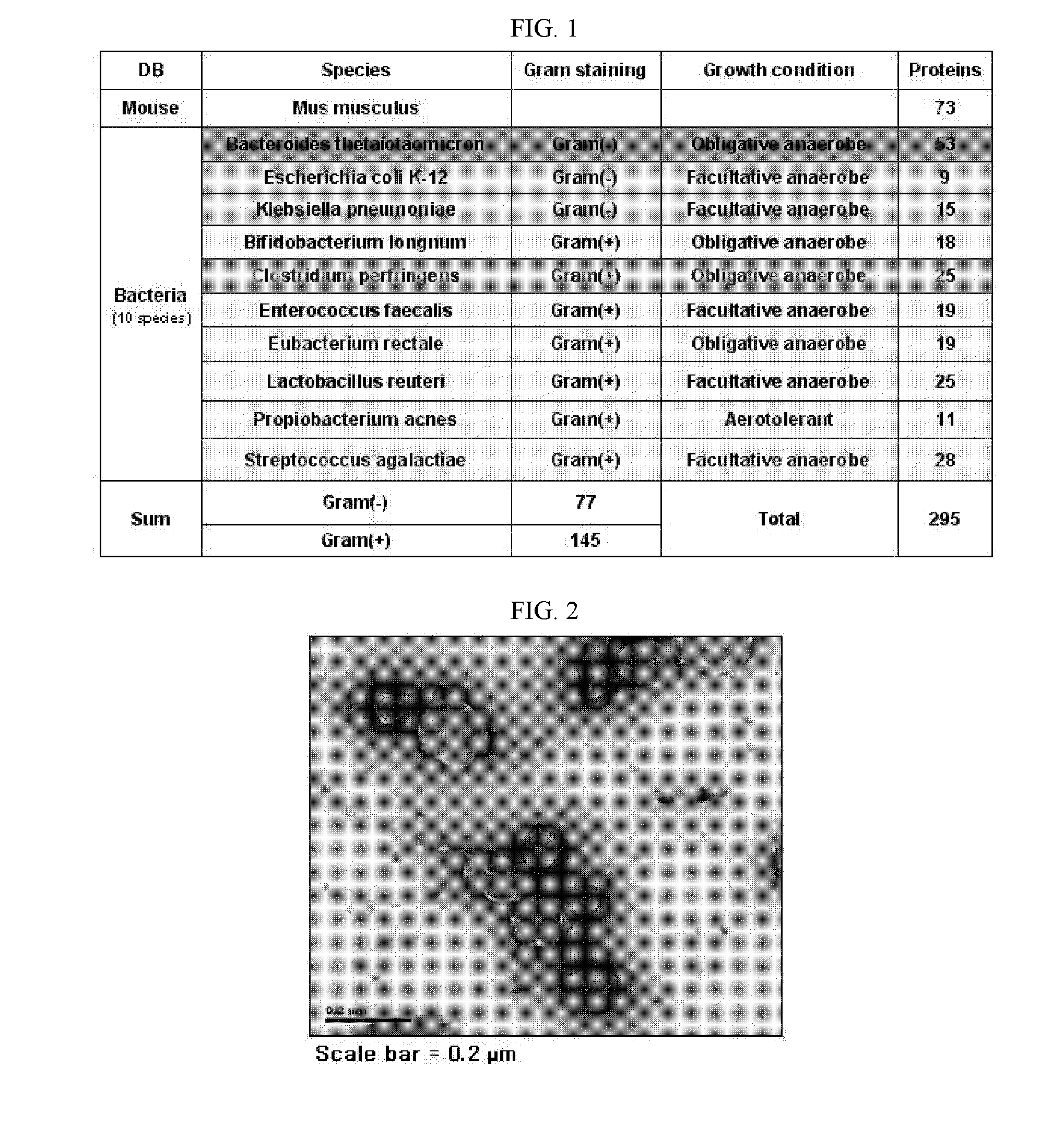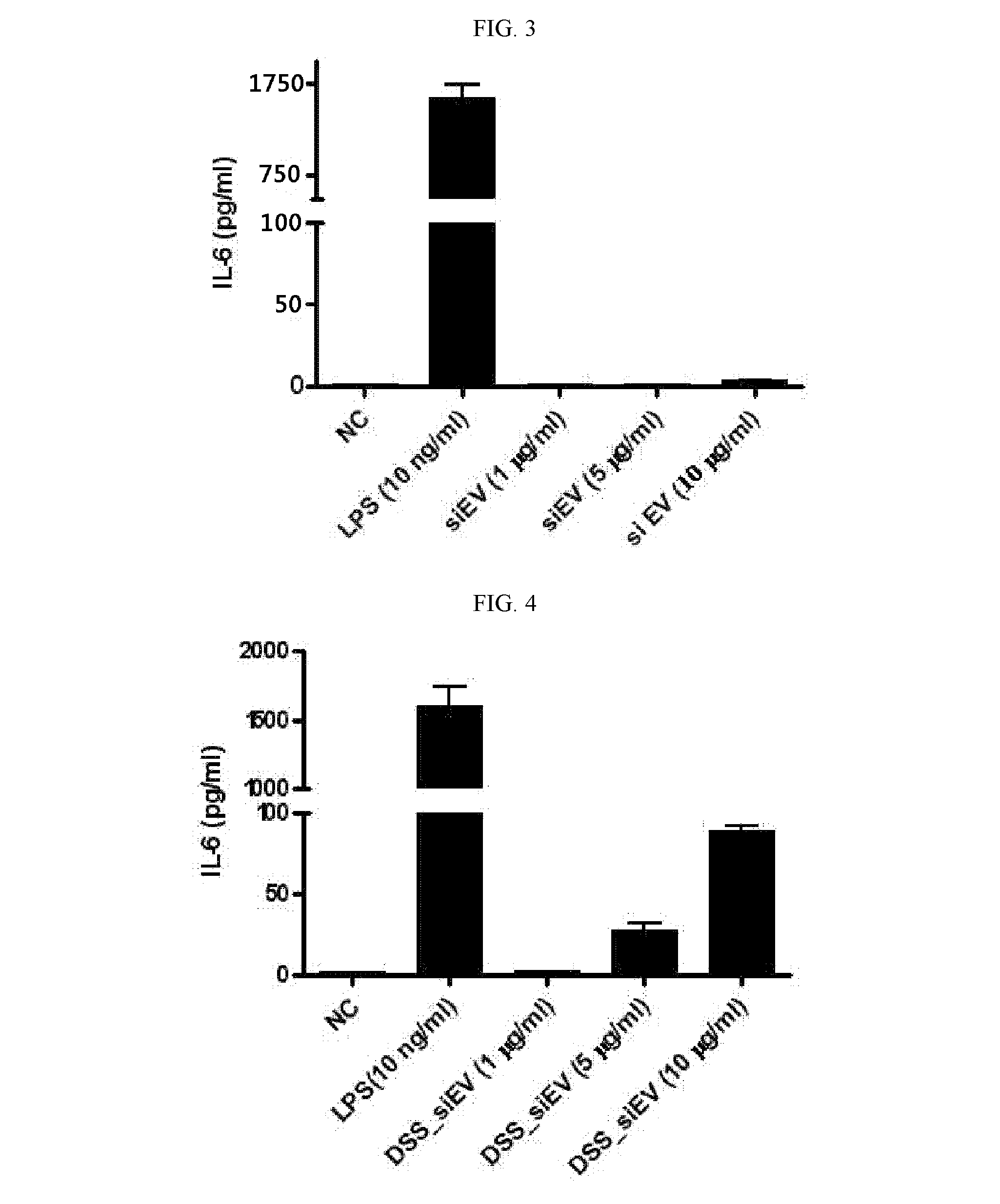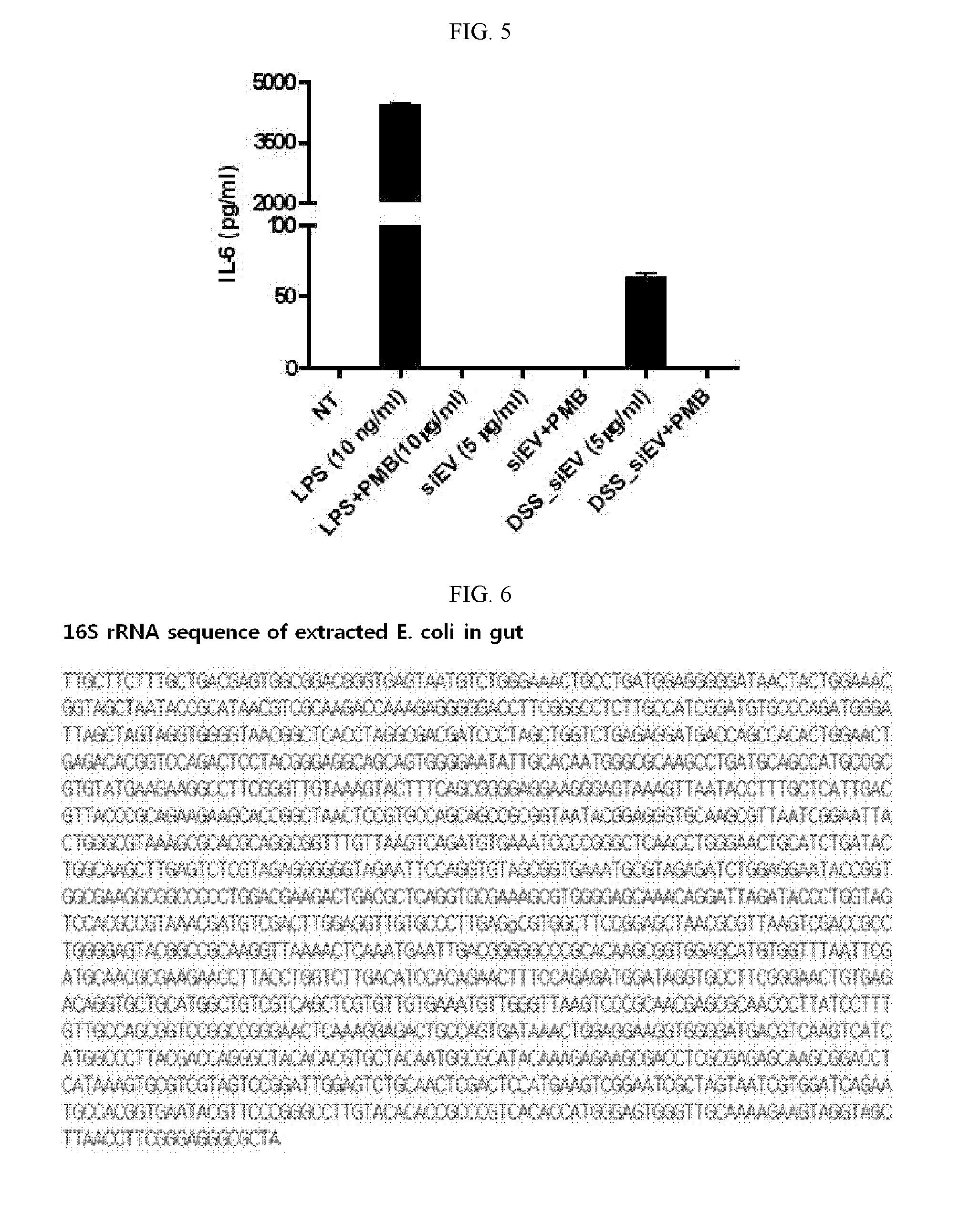Gut flora-derived extracellular vesicles, and method for searching for a disease model, vaccine, and candidate drug and for diagnosis using the same
a technology of extracellular vesicles and gut flora, which is applied in the field of gut flora-derived extracellular vesicles, and methods for searching for disease models, vaccines, and candidate drugs and for diagnosis using the same. it can solve the drawback of low reproducibility of animal models, inflammation and death in mice, and no therapeutics targeting lps have been successfully developed so far. , to achieve the effect of effective screening a candidate drug and effective excavation
- Summary
- Abstract
- Description
- Claims
- Application Information
AI Technical Summary
Benefits of technology
Problems solved by technology
Method used
Image
Examples
example 1
Proteomic Assay of Extracellular Vesicles Separated from Normal Mice
[0165]Extracellular vesicles were separated from mouse feces. In this regard, first, 25 g of feces excreted from 5-week-old, male C57BL / 6 mice was resuspended in 2 L of PBS (phosphate buffered saline) at 4° C. for 16 hours. After the centrifugation of the suspension at 4° C. and 10,000×g for 20 min, the supernatant was passed through a filter with a pore size of 0.45 nm. The filtrate thus free of bacteria was about 30-fold concentrated to 70 mL using QuixStand Benchtop System equipped with a membrane with 100 kDa cutoff. The concentrate was again centrifuged at 4° C. and 10,000×g for 20 min. This supernatant was added to 0.5 ml of 2.5 M sucrose solution (2.5 M sucrose / 20 mM HEPES / 150 mM NaCl, pH7.4) and 1 ml of 0.8 M sucrose solution (0.8 M sucrose / 20 mM HEPES / 150 mM NaCl, pH7.4) in an ultracentrifuge tube, followed by ultracentrifugation at 4° C. and 100,000×g for 4 hours. The layer containing extracellular vesicle...
example 2
Secretion of Inflammatory Mediators by Extracellular Vesicles Separated from Small Intestinal Fluid of Normal and Diseased Mice
[0171]Extracellular vesicles were separated from small intestinal fluids of normal mice and DSS-induced mouse model of irritable bowel disease. To this end, mice were operated on to excise the small intestine. The peyer's patch and liquid were removed from the excised small intestine which was then cut at regular lengths of about 5 cm. The intestinal pieces were transversely cut and washed with physiological saline to remove impurities therefrom. They were again cut into pieces with dimensions of 1 cm×1 cm and vortexed five times for five sec per time in 30 mL of physiological saline. After the removal of intestinal tissues and impurities by centrifugation, the supernatant was ultra-centrifuged to separate extracellular vesicles.
[0172]FIG. 2 shows sizes and morphologies of the separated extracellular vesicles as observed by transmission electron microscopy (...
example 3
Characterization of Extracellular Vesicles Isolated from E. coli of Gut Flora in Peritoneal Fluid of CLP-Induced Animal Model of Sepsis
[0176]CLP (cecal ligation and puncture) was performed as previously reported. In brief, one C57BL / 6 (male, 6 weeks old) mouse was anesthetized and a midline incision was made through the linea alba. The cecum was located, ligated with a sterile thread and perforated twice with 18-gause needle. Forty hours later, 3 mL of PBS was intraperitoneally injected into the mouse using a 5 mL syringe and well-mixed therein, after which 1 mL of peritoneal fluid was recovered. A mixture of 10 μl of the recovered fluid and 90 μl of LB (Luria Bertani) was 10,000-fold diluted, spread over LB agar plates and incubated at 37° C. for 8 hours in an incubator. One of the colonies thus formed was inoculated into 5 mL LB in a test tube and incubated for 8 hours in a 37° C. incubator. A mixture of 10 μl of this culture and 90 μl of LB was 10,000-fold diluted, spread over LB...
PUM
 Login to View More
Login to View More Abstract
Description
Claims
Application Information
 Login to View More
Login to View More - R&D
- Intellectual Property
- Life Sciences
- Materials
- Tech Scout
- Unparalleled Data Quality
- Higher Quality Content
- 60% Fewer Hallucinations
Browse by: Latest US Patents, China's latest patents, Technical Efficacy Thesaurus, Application Domain, Technology Topic, Popular Technical Reports.
© 2025 PatSnap. All rights reserved.Legal|Privacy policy|Modern Slavery Act Transparency Statement|Sitemap|About US| Contact US: help@patsnap.com



